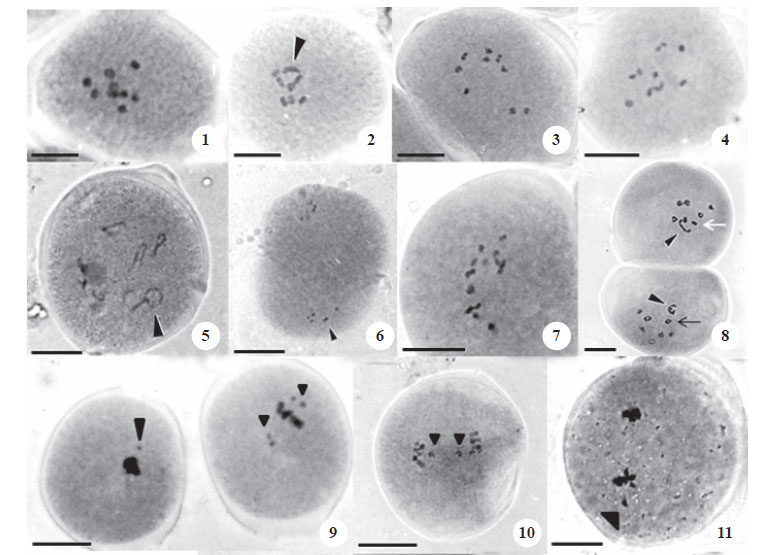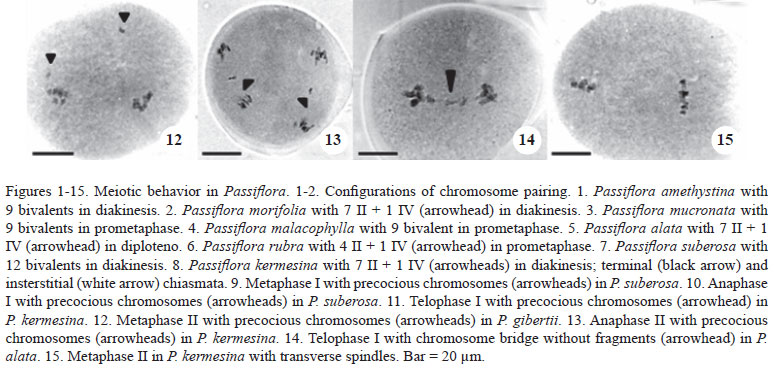The meiotic behavior of fourteen Passiflora taxa was analyzed. The species were grouped according to the n value (6, 9 and 12) for statistical studies. Some species presented tetravalent associations or univalent chromosomes in diakinesis, bivalent formation prevailing. The qui-square test revealed significant differences in the chiasma frequency among species for n = 9 and n = 6 groups. There was predominance of interstitial chiasmata in almost all studied species. The n = 12 group was the only one whose meiotic behavior was considered similar due to the quantity of chiasmata per cell, tendency of interstitial chiasma localization. Some species presented meiotic irregularities, such as laggard and precocious chromosomes in meiosis I. In telophase II the percentages of meiotic irregularities was low. Irregularities in the spindle orientation were presented in higher percentages in the end of meiosis II, and were also responsible for post-meiotic abnormal products. The irregularities observed during meiosis can have influence on the percentage of sterile pollen grains and success of interspecific crossings in Passiflora species.
chiasmata; meiotic index; microsporogenesis; passion flower; post-meiotic products













